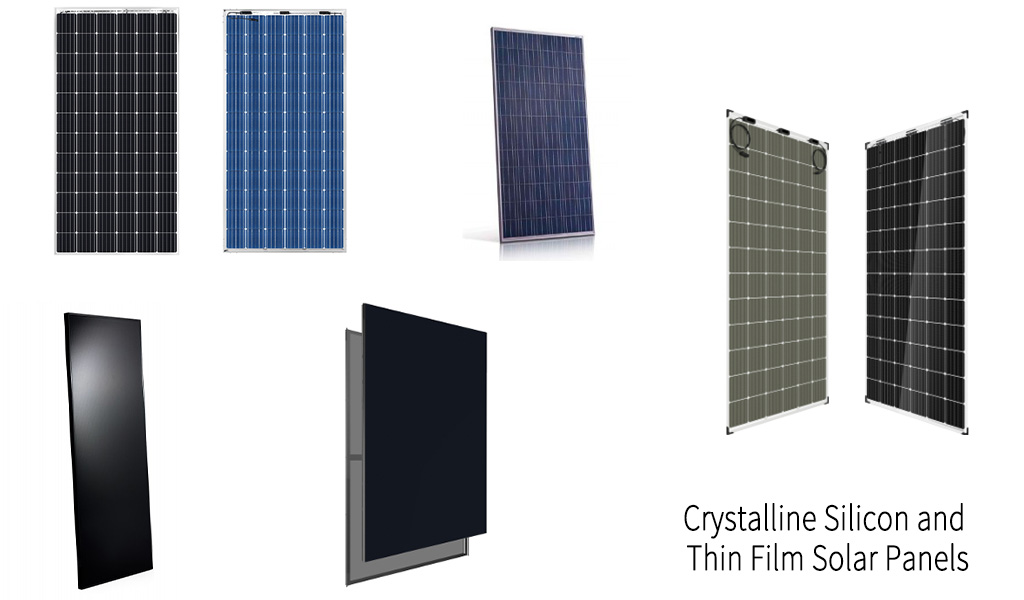
What are solar panels made of?
2023-12-05There are two main types of solar panels for roof and ground installation: crystalline silicon and thin film.

Crystalline Silicon Solar Panel
Crystalline silicon (c-Si) solar panels are the most common. They are those rectangular grids that look like little blue or black squares. Those smaller squares are silicon solar cells, which are connected in series to form circuits. The more batteries in series, the more power the system can produce.
There are two core types of crystalline silicon solar panels: polycrystalline silicon and monocrystalline silicon. Monocrystalline silicon solar is made by growing a single crystal. Polycrystalline solar is made by pouring molten silicon into castings.
Thin Film Solar Panels
Thin-film panels are more traditionally used in large utility-scale installations. Thin semiconductors are deposited on glass, plastic or metal foil substrates. Membranes, as the name suggests, can be thin and sometimes flexible. It's lightweight and flexible, so it can be used on curved roofs, cars and other unique installations.
Common thin films fall into three categories: amorphous silicon (a-Si), cadmium telluride (CdTe), and copper indium gallium selenide (CIGS). Thin-film solar cells are typically made through a process of co-evaporation of chemicals on glass sheets. Their conversion efficiency is lower than that of silicon, but reduces the amount of material needed to make a battery.
Module assembly
Generally speaking, all solar panels consist of solar cells with a glass layer on the front and a protective backsheet on the back. Usually made of a polymer, the backsheet is adhered to the back of the module to provide electrical insulation. White backplanes are the most common, although more black backplanes are used for efficient modules seeking some kind of aesthetic.
The aluminium frame usually completes a module. They add strength to the panel and protect the edges of the glass. Frames help attach racks and mounting systems to panels to secure them to the roof or ground.
But that's all changing. With the new bifacial design (when the solar cells are exposed on the front and back of the panel), the backsheet is no longer required. Some panels are also frameless, opting to sandwich the solar cells between two sheets of glass, or use a stronger backsheet that doesn't require a frame.
